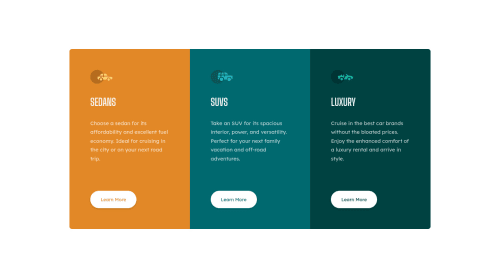3 Column Card with HTML, CSS, GridBox

Solution retrospective
I decided to challenge myself to exclusively use CSS Gridbox to layout the card instead of relying on Flexbox. My understanding of how CSS Gridbox is better, but there are certain properties I'm still confused.
I had a hard time figuring out how to vertically center the cards on larger screens with just CSS GridBox. I ended up relying on using flexbox on the parent element, body, to center it. What is one of the ways to vertically center the .card container on desktop screens?
Any tips, suggestions, and feedback is welcome!
Thank you! #HappyCoding
Please log in to post a comment
Log in with GitHubCommunity feedback
No feedback yet. Be the first to give feedback on Jesse Ma's solution.
Join our Discord community
Join thousands of Frontend Mentor community members taking the challenges, sharing resources, helping each other, and chatting about all things front-end!
Join our Discord